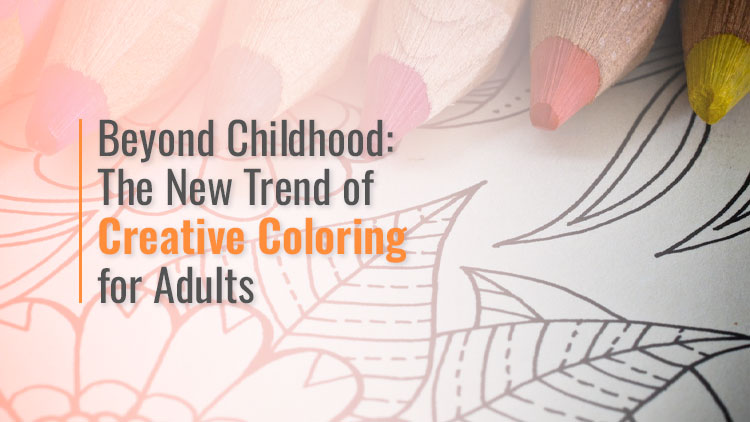
Benefits of Coloring for Mental Health and Well-Being

Benefits of Coloring for Mental Health and Well-Being
Introduction
Coloring is often associated with childhood, but in recent years, it has gained popularity among adults as a powerful tool for relaxation and mental well-being. With the rise of adult coloring books, art therapy, and mindfulness practices, people have discovered that coloring is more than just a pastime—it’s a scientifically backed method for reducing stress, improving focus, and enhancing emotional health. Whether you’re filling in intricate mandalas or simply enjoying freehand doodling, coloring can serve as a therapeutic escape from the pressures of daily life.
Coloring engages both hemispheres of the brain, stimulating creativity while promoting concentration and mindfulness.
At VERSAtile Reads, we believe in holistic learning and well-being. Just as structured learning enhances technical expertise, engaging in mindful activities like coloring can improve focus, relieve stress, and promote productivity. Whether preparing for certification exams, cloud computing courses, or AI training, maintaining mental clarity is crucial for success. By integrating relaxation techniques like coloring into daily routines, learners can enhance cognitive function and stay motivated on their educational journey.
How Coloring Enhances Mental Health and Well-Being
1- Reduces Stress and Anxiety
Coloring has been shown to lower stress levels by shifting focus away from negative thoughts. Engaging in a creative activity like coloring encourages mindfulness, helping individuals concentrate on the present rather than worrying about the past or future. Studies have indicated that structured coloring, such as filling in geometric patterns or mandalas, can significantly reduce cortisol levels, the hormone associated with stress.
2- Improves Focus and Mindfulness
Mindfulness—the practice of being fully present in the moment—is a key component of mental well-being. Coloring naturally fosters mindfulness by engaging the brain in a focused yet relaxed state. Unlike digital distractions or multitasking, coloring requires sustained attention, which can help improve concentration and cognitive function. This makes it an excellent activity for individuals struggling with attention disorders or those looking to enhance their ability to focus.
3- Encourages Self-Expression and Creativity
Many people believe that creativity is reserved for artists, but coloring proves otherwise. Choosing colors, blending shades, and experimenting with designs allow individuals to express themselves in a non-verbal way. This creative freedom can be particularly beneficial for people who find it difficult to articulate emotions, providing a safe outlet for self-expression and emotional processing.
4- Enhances Mood and Emotional Well-Being
Engaging in artistic activities like coloring stimulates the production of dopamine, a neurotransmitter associated with pleasure and motivation. This can lead to improved mood, reduced symptoms of depression, and an overall sense of well-being. Many individuals find that coloring helps them manage emotions, offering a sense of accomplishment and joy that carries over into other aspects of life.
5- Provides a Digital Detox and Reduces Screen Time
In today’s digital age, excessive screen time has been linked to increased anxiety, sleep disturbances, and decreased attention span. Coloring provides a much-needed break from screens, allowing individuals to unwind in a screen-free environment. This can help reduce eye strain, improve sleep quality, and foster healthier habits related to relaxation and self-care.
6- Boosts Brain Function and Cognitive Abilities
Coloring isn’t just beneficial for emotional health—it also enhances cognitive function. It activates both the logical left hemisphere and the creative right hemisphere of the brain. This dual engagement can improve problem-solving skills, memory retention, and hand-eye coordination. Coloring is particularly valuable for older adults, as it helps maintain cognitive agility and may even reduce the risk of neurodegenerative diseases like Alzheimer’s.
7- Acts as a Form of Meditation
Similar to traditional meditation, coloring allows individuals to enter a flow state—a mental condition where they are completely absorbed in an activity. This state of deep focus promotes relaxation and reduces symptoms of anxiety and depression. Many therapists recommend coloring as an alternative form of meditation for those who struggle with sitting still or focusing on breathwork.
8- Helps with Emotional Processing and Healing
For individuals experiencing grief, trauma, or emotional distress, coloring can be a therapeutic tool for processing emotions. Art therapy, which incorporates activities like coloring, has been widely used to help people cope with difficult experiences. Engaging in creative expression can bring a sense of relief, helping individuals navigate complex feelings without the need for verbal communication.
9- Strengthens Social Connections
Coloring can also be a social activity, fostering connections and reducing feelings of loneliness. Coloring groups, art therapy sessions, and family-friendly coloring activities provide opportunities for bonding and shared experiences. Engaging in creative pursuits with others can enhance social skills, promote a sense of belonging, and contribute to overall happiness.
10- Supports Physical Relaxation and Better Sleep
The repetitive motions involved in coloring help relax the body, slowing down breathing and reducing muscle tension. This physical relaxation contributes to overall well-being and can be particularly beneficial before bedtime. Engaging in a calming activity like coloring before sleep can signal the brain to wind down, leading to improved sleep quality and reduced insomnia.
Summary
Coloring is more than just a hobby—it is a powerful tool for enhancing mental health and overall well-being. By reducing stress, improving focus, boosting creativity, and promoting mindfulness, coloring provides a simple yet effective way to support emotional and cognitive health. Whether used as a form of meditation, a means of self-expression, or a way to connect with others, coloring offers significant benefits for people of all ages. Embracing this creative practice can lead to greater relaxation, improved mood, and a more balanced life.
Conclusion
Coloring is a powerful, accessible, and enjoyable way to improve mental health and overall well-being. Whether used as a form of self-care, a meditative practice, or a way to connect with others, its benefits are undeniable. As more people turn to creative outlets for stress relief, coloring continues to prove itself as a valuable tool for emotional balance and relaxation.
FAQs
1. Can coloring really help reduce anxiety?
Yes, studies have shown that coloring can lower stress and anxiety levels by promoting mindfulness and relaxation. It shifts focus away from negative thoughts and engages the brain in a calming activity.
2. Is coloring beneficial for adults as well as children?
Absolutely! While traditionally associated with children, coloring has gained popularity among adults as a therapeutic activity that enhances mental well-being, improves focus, and reduces stress.
3. Do we need artistic skills to benefit from coloring?
No artistic skills are required! Coloring is about the process rather than the result. The simple act of choosing colors and filling in designs can be deeply relaxing and rewarding.
- Published Date:



